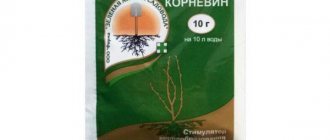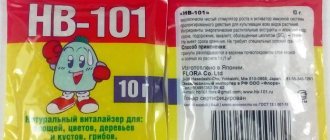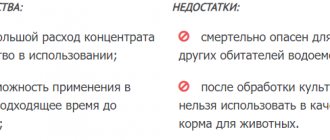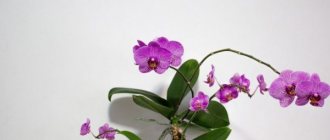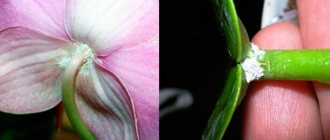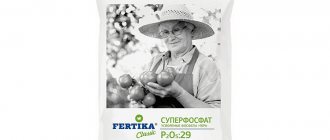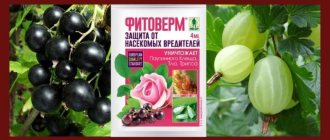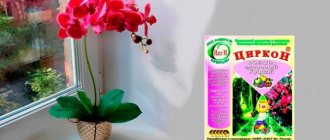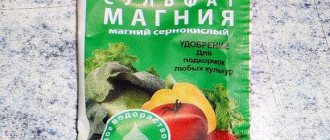Author: Elena N. https://floristics.info/ru/index.php?option=com_contact&view=contact&id=19 Category: Bioregulators Published: July 29, 2014Last edits: February 20, 2020
Anyone who has tried to germinate seeds, replant a plant and root cuttings knows that achieving a 100% result is very difficult, and sometimes impossible, since not all seeds germinate, not all cuttings are viable and not all transplanted plants take root in a new place. Medicines called growth stimulants help minimize risks. One of the most reliable drugs in this group is Kornevin. Our story will be about the properties of this growth stimulator and how to use it.
Kornevin's action
Kornevin contains indolylbutyric acid (IBA), which is the main active ingredient: when it gets into the soil, IBA is converted into the hormone heteroauxin, which stimulates the growth of callus and roots due to irritation of the integumentary tissues of the plant. Plants can be treated with Kornevin no more than twice: before planting and after planting.
Cuttings treated by Kornevin not only take root more easily, but are also much less likely to become infected with rot. The root system under the influence of this biostimulator develops faster, and the plant itself becomes more resistant to excess or lack of moisture in the soil, as well as to sudden changes in temperature.
- Instructions for use of the Commander
An analogue of Kornevin to one degree or another is the drug Heteroauxin.
Advantages of Kornevin:
- the drug can be used for almost all crops;
- the development of cuttings after using Kornevin is significantly accelerated;
- in all plants the root system develops better and faster;
- seedlings adapt and take root more easily;
- the use of the drug can stop fruit falling from the tree;
- plants become more resistant to unfavorable environmental factors;
- Kornevin is compatible with many drugs;
- The drug has a very affordable price.
Kornevin also has disadvantages:
- in case of an overdose of the drug, plants can get burned or rot;
- an aqueous solution of the drug sometimes gives a weak effect, and sometimes is not effective at all.
Advantages and disadvantages
It has been noticed that Kornevin fertilizer acts more gently and longer than its analogues, so less powder and less watering are required. Besides:
- acts on all difficult-to-root plants in the garden, vegetable garden, as well as indoor crops;
- increases productivity in northern regions;
- increases seed germination;
- enhances plant immunity and resistance to frost, drought, and temperature changes;
- with the help of root, you can save dying crops, the way of caring for which did not meet their needs.
The disadvantages include the following:
- an aqueous solution does not always work - sometimes it is necessary to use a dry substance if, after 1 week, the first roots do not appear on the cuttings;
- to destroy harmful bacteria and fungi, it is necessary to use other substances, since the use of root is limited to callus stimulation;
- an overdose can lead to growth inhibition, so be sure to read the instructions before using root.
Despite the shortcomings, the effect of the drug is always higher than when using mixtures that contain natural autotoxins - honey, yeast.
Instructions for use of Kornevin
Kornevin – dry application
- Kornevin is produced in the form of a fine powder in the shade of baked milk in bags of different capacities: 4, 5, 10, 50 g. It is used in dry form and in solution.
- Before planting plants, their roots are dusted with Kornevin. Dry Kornevin powder can be mixed in equal parts with charcoal powder or in a 10:1 ratio with a fungicide (for example, the biological product Fitosporin-M). This mixture will not only help the plant take root faster, but will also strengthen its resistance to fungal diseases.
- The cuttings can be powdered with a root former, or you can simply dip them into a container of powder and then shake off the excess. Cuttings should be dipped no deeper than 2 centimeters, and leaf cuttings should be no deeper than 1 cm. After treatment with Kornevin, the cuttings are immersed in water or planted in a prepared substrate for rooting.
Application of Kornevin solution
Kornevin's solution is used for watering plants, as well as for treating their bulbs, seeds and tubers. The solution is 0.1%, that is, 1 g of Kornevin is dissolved in 1 liter of water. Seeds and bulbs are soaked in this solution for 16-20 hours. Only a freshly prepared root former solution is effective.
Consumption of Kornevin solution:
- tree seedlings (both fruit and ornamental) - 2-3 liters per 1 tree;
- shrub seedlings – 0.25-0.3 l per 1 bush;
- seedlings of fruit and vegetable crops – 50-60 ml per 1 seedling;
- flower seedlings - 30-40 ml per 1 seedling.
Treatment of planting material by Kornevin
| culture | How to prepare the solution | Dosage and treatment time |
| Root vegetables, tubers, bulbs | 5 g/5 l, dilute in warm water | 18 hours |
| Fruit tree seedlings | 5 g/5 l, dilute in warm water | 2 liters for each tree |
| Raspberries, gooseberries, currants, etc. | 5 g/5 l, dilute in warm water | Under-barrel or hole watering during planting, 2 liters each. |
| Vegetables | 5 g/5 l, dilute in warm water | Root watering, 50 ml |
| Flowers and ornamental grasses | 5 g/5 l, dilute in warm water | Watering over areas or 40 ml at the root |
Kornevin is best used in those cases and for those plants that are difficult to take cuttings under normal conditions. From garden ones these are cherry, plum, quince, pear. Among the domestic flowers - ivy-leaved geranium, or an ampelous type of pelargonium, which grows in the form of a vine with lashes up to 1 meter long.
Rooting of conifers (pine, blue spruce, juniper)
For cuttings of these trees and shrubs, two-year-old shoots are taken. They look like a cross-shaped branch with two side shoots at the end. These side ones are cut off, 5-7 cm of the lower part is cleared of needles and shallow 2-3 scratches are made along the bark, into which Kornevin is rubbed.
Before treatment with Kornevin, coniferous branches are kept in water (can be filled whole) at a temperature of 18-20 degrees.
Then the root-treated seedlings are stuck into planting pots, which can be made from cut plastic transparent untinted 3-liter bottles at an angle of approximately 30⁰. The bottles are cut 1/3 from the bottom, filled with drainage (1-2 cm), soil with peat (10-12 cm) and washed and dried river sand (5 cm).
The seedling is then covered with the cut off top of the bottle for a greenhouse effect - this is why you need to take a transparent bottle, this will ensure normal light conditions.
It is better to keep the rooted seedling on the balcony until autumn, protecting it from direct rays of the sun.
It is better to plant seedlings in the spring, and in the fall transplant them into open ground, only covering them with polyethylene for the winter.
Precautionary measures
When working with the drug, you need to wear a plastic apron, latex gloves, a gauze bandage or a respirator, and glasses. To prepare the working solution, do not use containers that are used for eating or preparing food or containing drinking water. During the procedure you should not drink, eat or smoke. After finishing work, you must take a shower and put on clean clothes.
- Yeast solution as a growth stimulator and plant immunity enhancer
Empty packaging should be burned or thrown away with household waste.
Rooting grape cuttings
For rooting grape cuttings, kornevin is used both dry and diluted in water. This crop is quite easily propagated by cuttings, but if there is very little planting material or the variety is especially valuable, you should play it safe and use a root former.
The dry method is more reliable, it will require more powder consumption and is dangerous with the possibility of rotting of the cuttings. It is used if the selected variety does not take root in the solution. The dry method is used if, after 2 weeks of rooting in solution, callus formation has not occurred. The cutting should be carefully examined under a magnifying glass: if even microscopic growths are noticeable, it should be left in an aqueous solution.
First aid
The recommendations below are intended only for providing FIRST aid, after which you should immediately consult a doctor and follow his instructions! DO NOT SELF-medicate!
- Although the drug is not very dangerous, getting it into the body or on the skin can have unpleasant consequences.
- If the drug gets into the digestive system, you must immediately drink several glasses of water with activated carbon at the rate of 1 tablet per 10 kg of body weight and immediately call a doctor!
- If Kornevin gets into your eyes, rinse them in the open position with plenty of running water.
- If the drug gets on the skin, the contact area should be washed with plenty of cold running water.
Application for seedlings
Instructions for using root for seedlings include keeping the seeds in an aqueous solution for two hours. Crops that do not tolerate root damage well are watered with a stimulant during picking and two weeks after it. In order not to harm the sprouts, you need to know how to properly dilute the root for watering the seedlings. The working solution is prepared at the rate of 1 g of the drug per 1 liter of water. No more than 60 ml of liquid product is needed per plant. An overdose causes inhibition of seedling growth, so the seedlings are watered, carefully measuring the amount for each bush.
When transplanting grown seedlings into the ground, you should focus on the weather. On sunny and warm days it is not advisable to use the drug, since additional stimulation of root formation will stop the growth of the above-ground part and slow down the onset of fruiting. Favorable weather conditions themselves contribute to the development of the root system and further growth of the plant. More benefits will come from using the root for seedlings in a long, cold spring, when the earth is slightly warmed by the sun. At such a time, sprouts spend a lot of energy overcoming unfavorable conditions and transplanting into the soil turns out to be painful. To help young plants take root and maintain strength, a biostimulator is used. The powder solution is prepared according to the standard procedure described on the packaging.
Reviews
Maria: Kornevin is a strong stimulant that strengthens plant resistance to all sorts of adverse factors. I use it to support indoor plants weakened by disease or transplantation, to germinate seeds, and also to support rooting cuttings.
Peter: I use Kornevin when growing seedlings and when transplanting seedlings into the garden. The seedlings are strong and viable, very rarely get sick and can easily tolerate picking and transplanting.
Anastasia: I am an avid summer resident, I really love all kinds of experiments. The first time I used Kornevin to strengthen pruned seedlings: I simply added root former powder to the soil. The seedlings turned out to be surprisingly strong, with a developed root system. I watered a weak sapling of bush St. John's wort with Kornevin's solution, and it began to come to life right before our eyes.
Official website and manufacturer's recommendations: https://www.grepharm.ru/products/159/404/
Let's learn all the intricacies of vegetative propagation using the Kornevin phytostimulant
A beautiful, healthy and successfully fruiting plant is distinguished primarily by its developed root system. With the vegetative method of propagation, cuttings take root poorly, primarily due to poor root formation, and biostimulant fertilizers can help them with this. Kornevin is one of the most popular preparations containing everything necessary for growing root mass. In order for it to be beneficial and not cause harm, before use you need to learn all the subtleties of application.
- Description of root and its effect on plants
- How to use the drug according to the instructions
- Application for seedlings
- Kornevin for indoor plants
- Rooting grape cuttings
- How to root a rose from a bouquet using root
- Rules for handling root wine Video about the benefits and harms of root plant
Directory of indoor plants
Kornevin - for what? How to use the biological product. Read the article on how to properly dilute Kornevin for cuttings so as not to burn them.
The drug "Kornevin" is a biological growth stimulator. Suitable for processing bulbs and seedlings, and also used before rooting cuttings of berries and flower fruit crops. It acts specifically on the formation of roots - after treatment, small shoots appear on the cut cuttings
How does Kornevin act on cuttings?
"Kornevin" is active only for germination - it is not an independent fertilizer and cannot replace growth stimulants that are used to maintain the vital activity of cuttings after planting in open ground.
Plant growth stimulants at home
The industry offers more and more new drugs. However, natural growth stimulants for plants remain in demand. They can be easily and simply made at home. As a rule, the material for preparation is often at hand.
Even some household waste, such as banana peels, tea leaves, potato decoction and other products can be successfully and effectively used to help plants grow and develop faster. This applies to both domestic “pets” and those growing in summer cottages.
So, you can make a root former for plants yourself.
Most often for these purposes it is recommended to use:
- yeast: take 100 grams of the product per liter of water, stir and immerse the cuttings in the solution, which are ready for planting for further growth and development;
- ordinary aloe: from 6 to 8 drops of the juice of this plant are added to the liquid, after which the cuttings and leaves intended for germination are placed;
- the well-known potato: the tuber is divided into several parts, placing the stalk in the very middle.
The last method using potatoes is very suitable for propagating decorative flowers for the home.
Kornevin is an effective biostimulant that has proven itself among vegetable growers and flower growers.
. This unique product can be used for almost every crop and it effectively stimulates the root system to develop. This is an excellent fertilizer for plants growing at home. Kornevin is an excellent choice for growing strong, healthy plants.
Composition, action and dosage
In addition to IBA (0.5% of the dry weight of the substance, or 5 g per 1 kg of commercial powder), the root composition includes macro- and microelements that promote root formation: potassium, phosphorus, manganese and molybdenum. Kornevin is diluted simply: the number of grams in a bag is the same as regular tap water. It is also possible to pollinate the roots with a dry preparation, see below. The action of the root is based on the formation of an influx over the cut/fracture - callus; Kornevin as a phytohormone is primarily a stool former. Dormant buds awakened in the callus send out roots much more intensively than on other parts of the cutting, which is clearly visible in Fig.
Callus with young roots on a cutting
However, it is necessary to use root with caution. If the mother plant itself is well cut (the callus before root formation is small or not noticeable), the root will only delay rooting. Left on the trail. rice. it is clear that bean cuttings without IMC and root root take root and develop better. In this case, the rooting of strong cuttings from a strong healthy plant should be accelerated (if required) with heteroauxin, and the formation of roots on weak ones should be stimulated with epin.
The effect of indolylbutyric acid and root on plants with varying degrees of susceptibility to them
Note: in general, we do not particularly recommend Kornevin for cuttings of herbaceous plants; in this case, its purpose is somewhat different, see below.
Cuttings of moderately or weakly rooted plants (roses, hibiscus, indoor citrus fruits and grapes, indoor pomegranate) together with rootstock usually require the use of additional preparations; most often - specific to a given species. For example, rose cuttings root much better if root is used in combination with zircon, on the right in Fig. In any case, 3-7 days after planting a rooted cutting, you need to give it phosphorus-potassium fertilizer so that the rapidly growing roots “suck in” the callus, otherwise the seemingly well-established cutting may rot. Don’t rely on rich soil here; you need quickly absorbed mineral fertilizers.
About cuttings of conifers
Conifers are the most difficult to take cuttings. For them, phytohormones alone are not enough; a special cutting technique is needed. For example, how to propagate blue spruce and juniper with cuttings at home, see video:
Video: about propagation of blue spruce and juniper by cuttings
Cuttings of conifers make sense not only as saving costs on planting material. The species on the list were chosen because, grown from cuttings, these conifers can grow in pots in an apartment. Don't you feel sorry for the Christmas trees that are cut down en masse on New Year's Eve? And so it will be your own, alive. Juniper not only exudes a large amount of air-healthy phytoncides, but also produces “berries” (cones in a fleshy shell), which are widely used in pharmacopoeia, for enhancing drinks, etc.
A note on an unhealthy topic: juniper “berries” are excellent at absorbing fusel oils, while at the same time flavoring the alcohol.
Reviews about the effectiveness of the drug "Kornevin"
If you had to trim the roots very much, you can not soak them, but lightly powder them with “Kornevin”, taking it with a soft brush.
Sometimes on online forums for gardeners you can find stories like this:
“Due to my inexperience, I did something terrible this spring. I sowed radishes and watered them with Kornevin, so that they would grow bigger. When it rose, I watered it again with the same solution for greater effect. As a result, some kind of hairy misunderstanding grew up” (Anzhelika, Moscow).
Indeed, “Kornevin” is not suitable for all crops. It stimulates the growth of adventitious roots, and for root crops this effect is extremely undesirable.
Otherwise, reviews about the drug are positive. Crop experts also confirm the high effectiveness of this stimulant:
“The roots of the cuttings, when the cuttings themselves are placed in optimal conditions for germination, develop and grow a little slower than under the influence of the root stimulator “Kornevin.” Stimulating the growth of the root system is very beneficial for plants, because the growth of young roots increases the survival rate of plants.”
E.V. Oparina, biologist, participant of the conference of the Siberian Federal University
Kornevin analogues - how can you replace the stimulant?
When Kornevin is not available - what to do? It doesn’t matter, you can replace it with other drugs with similar effects.
How to prepare a natural ROOTS GROWTH STIMULANT. KORNEVIN with your own hands. Various recipes - video
Analogues of Kornevin include:
- Energen;
- Athlete;
- Kristalin;
- Zircon;
- Heteroauxin;
- Immunocytofin.
The effect of the drug is influenced by the condition of the soil, its nutritional value, and looseness. And, of course, environmental conditions are important. For example, in greenhouse conditions, Kornevin is combined with fungicides. The reason for this is that under the influence of humidity, spores have a higher reproduction rate.
How to root a rose from a bouquet using root
Sometimes green buds form on the stems of roses from a bouquet in place of torn leaves. If you like the variety, you should try rooting the cuttings. To do this, the stem is cut off at the bottom and top, leaving 3 healthy swollen buds.
The lower part of the stem from the cut to the lowest bud is scratched with a sharp knife to make it easier for the roots to germinate. Then this place, including the cut and the lower bud, is dipped in the root, and after a few minutes the excess is shaken off and the cutting is planted in a planting container. The top two buds should remain on the surface. It is advisable to use special soil for roses.
Cover the top of the container with polyethylene or cover it with a transparent plastic glass and place it in a warm, bright place. From time to time, the shelter is removed for ventilation and, if necessary, the soil is moistened.
To root roses, experts advise using rootin together with zircon.
If there are still living cuttings from the bouquet, you can try rooting them in an aqueous solution of the drug. Planting material is prepared in the same way as for dry rooting. Only the lower bud of the cutting should remain in the water.
Composition of the product
The composition of the root formation stimulator “Kornevin” is concentrated 5 g/kg indolylbutyric acid. It has a mild, prolonged effect in comparison with similar drugs.
Externally, it is a whitish powder that is best stored in a glass container in a dark place. Since the root former is used very sparingly, after opening the factory packaging it is poured into a dry glass container. Sometimes the name “Kornevin SP” is found on sale; it is the same drug, just produced by a different manufacturer.
How and how long is Kornevin stored?
The prepared solution is applied immediately. Cannot be stored. The container in which the solution was contained must be thoroughly rinsed and packaged so that children or pets do not have access to it.
As a rule, each package of the Kornevin stimulant has an expiration date marked. However, its effect applies exclusively to the packaged material, in other words, until the box is opened. When the mixture has already been opened, it is necessary to place it in a cool place, away from light. The box must be tightly closed.
The room where the opened box is stored must be dry. When all requirements are met, the powder can be stored for up to 6 months.
When the powder begins to harden or a drop of water gets on it, it should be disposed of environmentally.
Reviews about watering seedlings with Kornevin
Leave your feedback on the use of “Kornevin” for soaking seedlings, roots of seedlings (and maybe even seeds?). Write us a comment, we will be glad
